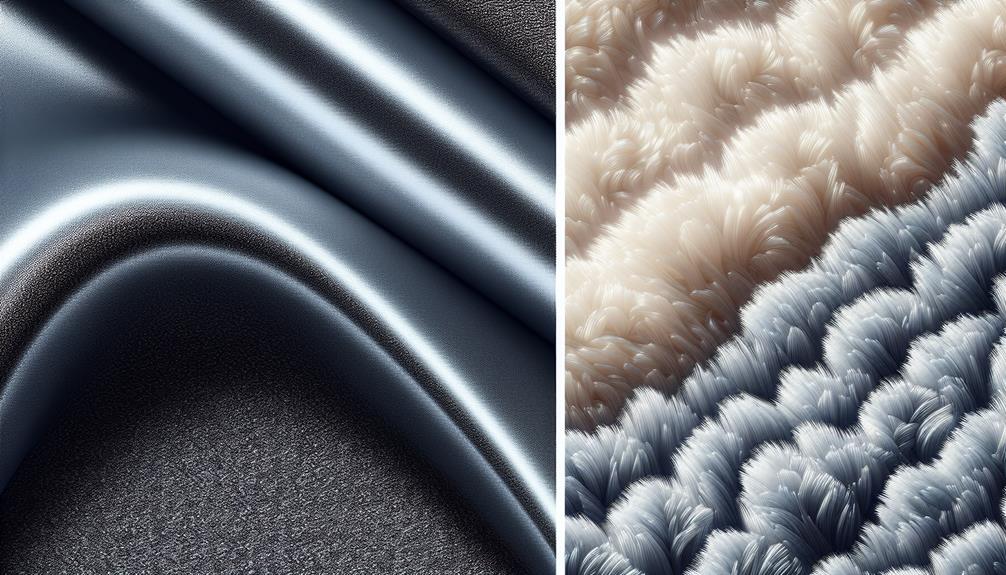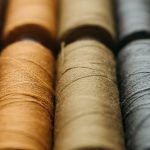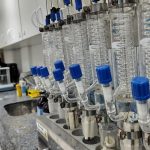Have you ever wondered about the differences between polypropylene and polyester? These two materials play significant roles in various products, from clothing to household items.
Understanding their distinctions can help you make informed decisions when it comes to selecting the right material for your needs. Let's unravel the unique characteristics of polypropylene and polyester, shedding light on their strengths and weaknesses in different applications.
Table of Contents
Key Takeaways
- Polyester offers high strength and color retention, while polypropylene excels in resisting bacteria and dries quickly.
- Manufacturing processes differ; polypropylene involves gas polymerization, while polyester requires acid and glycol reactions.
- Common applications vary; polyester is favored in clothing and household items, while polypropylene is common in toys and electronics.
- Environmental impact differs; polyester is non-biodegradable, while polypropylene requires efficient recycling for sustainability.
Key Characteristics
Polyester and polypropylene exhibit distinct key characteristics that set them apart in various applications. When it comes to wear and tear, polyester emerges as the Better Choice due to its high strength and resistance to creep. As a synthetic fiber, polyester is known for its durability, making it ideal for projects that require long-lasting materials.
On the other hand, polypropylene, while offering half the durability of polyester, stands out for its resistance to bacteria, acids, and solvents. This makes polypropylene a suitable option for applications where exposure to such elements is a concern.
Considering the unique properties of each material, polyester would be the preferred option for projects that demand high strength and resilience against wear and tear. In contrast, polypropylene would be better suited for projects where quick drying and resistance to certain chemicals are essential. Understanding the specific needs of a project is vital in determining whether polyester or polypropylene would be the Better Choice.
Manufacturing Process
The manufacturing process for polypropylene involves the polymerization of propylene gas, resulting in a thermoplastic polymer known for its high strength and durability. This process is distinct from the manufacturing of polyester, which requires reacting terephthalic acid and ethylene glycol to create the synthetic fiber known for its resistance to stretching and shrinking.
- Polypropylene is extruded through a spinneret to form fibers for weaving or knitting into various products.
- Polyester fibers are spun into yarn before being woven or knitted into fabrics, offering versatility in product creation.
Polypropylene production entails fewer steps compared to polyester manufacturing, making it a cost-effective process for durable materials. The thermoplastic nature of polypropylene allows for easy molding and reshaping during the manufacturing process.
- Polyester's manufacturing involves a more intricate chemical process to achieve its desired properties, leading to a different production approach than polypropylene.
Physical Properties
Moving from the manufacturing process to the discussion of physical properties, let's explore how these aspects differentiate polypropylene and polyester fibers.
Polyester stands out for its high strength and resistance to wear and tear, making it a durable choice. It has a higher melting point and better chemical resistance than polypropylene. In contrast, polypropylene, a natural fiber, may have half the durability of polyester, but it excels in resisting bacteria, acids, and solvents. Additionally, polypropylene is hydrophobic, meaning it absorbs less water and dries quicker than polyester.
When it comes to durability, polyester emerges as the stronger option, with better resistance to abrasions and superior color retention compared to polypropylene. Understanding these physical properties is important in selecting the right material based on specific needs for resistance, durability, and other factors in various applications.
Common Applications
Let's talk about where polypropylene and polyester are commonly used.
From textiles to industrial applications to packaging solutions, these materials play significant roles in various everyday products. Whether it's in our clothing, automotive parts, or food packaging, polypropylene and polyester are versatile materials with diverse applications.
Uses in Textiles
In textiles, both polyester and polypropylene serve distinct purposes due to their unique properties and applications.
- Polyester is favored for clothing, bedding, carpets, and household items due to its durability and versatility.
- Polypropylene is commonly used in toys, electronics, and building supplies for its high strength and moldability.
Polyester's cost-effectiveness makes it a popular choice for furniture like couches, chairs, mattresses, pillows, rugs, and curtains.
- Polypropylene's energy-efficient manufacturing process makes it a cost-effective option for various products.
Both polyester and polypropylene have specific applications in textiles, offering unique properties suitable for different project requirements.
Industrial Applications
Polypropylene and polyester find widespread use in various industrial applications due to their distinct properties and versatility. Polypropylene's strength and chemical resistance make it a popular choice for geotextiles, filters, and medical devices where moisture and bacterial resistance are essential.
On the other hand, polyester's durability and color retention properties are ideal for applications in clothing, upholstery, and industrial fabrics. Polyester is also favored in industrial settings for items like conveyor belts, seat belts, tire cord, and hoses due to its high strength and resistance to abrasion.
Both materials are commonly utilized in producing outdoor furniture, luggage, and backpacks, benefiting from their lightweight and durable nature.
Packaging Solutions
Moving from their industrial applications, both polypropylene and polyester play important roles in the world of packaging solutions, offering versatile options to meet diverse industry needs.
- Polypropylene is commonly used in packaging solutions like woven bags, flexible intermediate bulk containers (FIBCs), and bulk bags due to its strength and durability.
- Polyester is utilized in packaging applications such as shrink wrap, food packaging, and protective covers for its resistance to moisture and chemicals.
- Polypropylene packaging solutions are preferred for heavy-duty applications requiring high tensile strength and tear resistance.
- Polyester packaging solutions are suitable for products that need protection from UV rays, moisture, and harsh environmental conditions.
- Both polypropylene and polyester offer versatile options for packaging solutions, catering to different needs in various industries.
Environmental Impact
When considering the environmental impact of polypropylene and polyester, it's crucial to focus on their material recyclability, carbon footprint comparison, and biodegradability considerations.
These aspects shed light on how these synthetic materials interact with our ecosystems and waste management systems.
Material Recyclability
Considering the environmental impact of material recyclability, it becomes evident that polyester poses significant challenges due to its non-biodegradable nature and complex recycling requirements. When comparing the recyclability of polypropylene and polyester, it's important to understand their environmental implications.
Here are some key points to take into account:
- Polyester is non-biodegradable, making its recycling a challenge.
- Recycling processes for polyester are complex and energy-intensive.
- Polypropylene, a non-renewable resource, requires efficient recycling to reduce environmental harm.
- Polypropylene is cheaper to produce but demands proper recycling to minimize its impact.
- Both materials emphasize the importance of recycling to mitigate their environmental footprint.
Carbon Footprint Comparison
Polyester's significant carbon footprint in production contrasts with polypropylene's lower environmental impact, particularly in energy consumption. Polyester emits more greenhouse gases and consumes more energy than polypropylene during manufacturing. This higher energy requirement contributes to its elevated carbon footprint.
However, both materials can be recycled to lessen their environmental impact. Recycling polyester can help mitigate its sustainability drawbacks, while polypropylene is also recyclable, aiding in reducing its carbon footprint. Proper recycling practices are essential for both materials to prevent plastic pollution.
When considering the environmental impact, polypropylene emerges as a more eco-friendly choice due to its lower carbon footprint and reduced energy consumption compared to polyester.
Biodegradability Considerations
To assess the environmental impact of polyester and polypropylene, it's essential to take into account their biodegradability characteristics.
- Polyester isn't biodegradable, contributing to environmental pollution.
- Polypropylene is a non-renewable resource, emphasizing the need for recycling to prevent breakdown.
Both polyester and polypropylene have sustainability drawbacks, necessitating recycling to mitigate their environmental impact.
- Polyester is gradually being replaced by greener alternatives due to its environmental implications.
- Polypropylene, while cost-effective to produce, requires recycling to prevent environmental degradation.
Considering these factors, the lack of biodegradability in polyester and the non-renewable nature of polypropylene highlight the importance of recycling to minimize the environmental consequences associated with these materials.
Decision Factors
When deciding between polypropylene and polyester rugs, one key factor to think about is their specific characteristics and how they align with your needs and preferences. Polyester is a synthetic material that's better suited for high-traffic areas due to its durability, making it a great choice for spaces that will see a lot of wear and tear.
On the other hand, polypropylene is ideal for areas that need quick drying, making it a better option for places with higher moisture exposure. If you're looking for a rug that's more stain-resistant and less static-y, polyester would be the better choice. However, if affordability and fast drying are more important factors for you, then polypropylene might be the way to go.
Ultimately, considering how the rug will be used, the level of wear and tear it will endure, and your specific needs will help you make the best decision between these two synthetic materials.
Frequently Asked Questions
What Is Better Polypropylene or Polyester?
Polyester offers durability and water resistance, making it a great choice for many applications. However, polypropylene's affordability and high-traffic suitability shouldn't be overlooked. Both materials have their strengths depending on your specific needs.
Which Is Better Polyester or Polyethylene?
Polyester offers strength, durability, and UV resistance, making it a popular choice for clothing, bedding, and household items. Polyethylene, a versatile plastic, is lightweight and cost-effective for various applications. Both have environmental implications.
Is Polyester Better Than Polypropylene for Couch?
Polyester surpasses polypropylene in couch durability and longevity. It's the top choice for enduring comfort. Cost-effective polypropylene may seem attractive, but for lasting quality, polyester wins. Choose polyester for a cozy and long-lasting couch.
What Is Polypropylene Fabric Good For?
Polypropylene fabric excels in outdoor furniture, rugs, and healthcare items due to its durability, water resistance, and non-absorbent properties. It finds use in tote bags, automotive interiors, and protective gear for its strength and stain resistance.
- The Use of Nonwovens in Construction and Civil Engineering - July 12, 2025
- The Use of Nonwovens in Construction and Civil Engineering - July 11, 2025
- The Use of Nonwovens in Construction and Civil Engineering - July 11, 2025







